Jill Parker Birthday Exhibit - 2023
Step 0 of 0
1

2

3

4

5

6

7

8

9

10

E355 - My Landscape II - Joan Mitchell - 1967
My Landscape II conveys the sense of a tall window flung open to the world outside, but the vantage point is an interior one—literally, as though through a window, and metaphorically, as if envisioned in memory. In 1967, Mitchell bought a two-acre estate on a hillside overlooking the Seine in Vétheuil, about forty miles north of Paris. The view from the house was magnificent—from the narrow terrace, Mitchell could see the river—and the effect on her work was immediate and powerful. She said of Vétheuil, “It’s a secure landscape, not desperate. I’ve chosen one you can live in.”
Source: Smithsonian

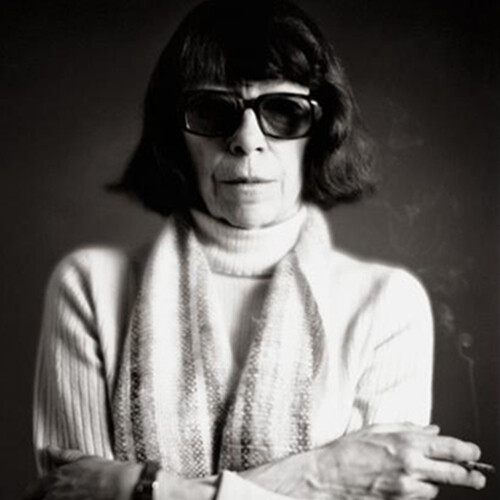
Joan Mitchell (February 12, 1925 – October 30, 1992) was an American artist who worked primarily in painting and printmaking, and also used pastel and made other works on paper. She was an active participant in the New York School of artists in the 1950s. A native of Chicago, she is associated with the American abstract expressionist movement, even though she lived in France for much of her career.
Mitchell's emotionally intense style and its gestural brushwork were influenced by nineteenth-century post-impressionist painters, particularly Henri Matisse. Memories of landscapes inspired her compositions; she famously told art critic Irving Sandler, "I carry my landscapes around with me." Her later work was informed and constrained by her declining health.
Mitchell was one of her era's few female painters to gain critical and public acclaim. Her paintings, drawings, and editioned prints can be seen in major museums and collections around the world, and have sold for record-breaking prices. In 2021, the San Francisco Museum of Modern Art and Baltimore Museum of Art co-organized a comprehensive retrospective of her work.
In her will, Mitchell provided for the creation of the Joan Mitchell Foundation, a non-profit corporation that awards grants and fellowships to working artists and maintains her archives.
Mitchell was born in Chicago, Illinois, the daughter of dermatologist James Herbert Mitchell and poet Marion Strobel Mitchell.[1] She enjoyed diving and skating growing up, and her art would later reflect this athleticism; one gallery owner commented that Mitchell "approached painting almost like a competitive sport".[2] Mitchell frequently attended Saturday art classes at the Art Institute of Chicago, and eventually would spend her summers of later adolescence in an Institute-run art colony, Ox-Bow. She lived on Chestnut Street in the Streeterville neighborhood and attended high school at Francis W. Parker School in the Lincoln Park neighborhood. She was close to her Parker classmate Edward Gorey and remained friends with him in later years, although neither cared for the other's work.[3]
Mitchell studied at Smith College in Massachusetts and the Art Institute of Chicago,[4] where she earned her BFA in 1947 and her MFA in 1950.[5] After moving to Manhattan in 1947, she wanted to study at Hans Hofmann's school in New York City but, according to curator Jane Livingston, Mitchell attended only one class and declared, "I couldn't understand a word he said so I left, terrified."[6] A $2,000 travel fellowship allowed her to study in Paris and Provence in 1948–49,[7] and she also traveled in Spain and Italy. During this period, her work became increasingly abstract.[8]
Mitchell married American publisher Barney Rosset in September 1949 in Le Lavandou, France. The couple returned to New York City later that year.[9] They would divorce in 1952.[8]
Source: Wikipedia
E355 - Pieta - Michelangelo - 1499
.jpg)
The Madonna della Pietà (Italian: [pjeˈta]; 1498–1499) informally known as La Pietà is a Roman Catholic dolorous image of Jesus and Mary at Mount Golgotha representing the “Sixth Sorrow” of the Blessed Virgin Mary and a key work of Italian Renaissance sculpture carved by Michelangelo Buonarroti, now enshrined within Saint Peter's Basilica, Vatican City. It is the first of a number of works of the same subject by the Florentine artist.
The statue was originally commissioned for a Cardinal of France, Jean Bilhères de Lagraulas, a serving French ambassador in Rome. The Carrara marble sculpture was made for the cardinal's funeral monument, but was moved to its current location, the first chapel on the north side after the entrance of the basilica, in the 18th century.[1] It is the only piece Michelangelo ever signed. This interpretation of the Pietà is unprecedented in Italian sculpture[2] because it balances the Renaissance ideals of classical beauty with naturalism.
Source: wikipedia
E355 - Moon and Half Dome - Ansel Adams - 1960
Ansel Adams' photograph "Moon and Half Dome" was taken in Yosemite National Park in 1960[1]. The photograph features a nearly full moon hovering above Half Dome, a granite crest in Yosemite Valley. Adams was known for his use of the moon in his photographs, and he took this particular photo during a full moon in Yosemite[2]. The photograph has become one of Adams' most famous works and is considered a masterpiece of landscape photography. The story behind the photograph is that Adams and his friends hiked up to Glacier Point to capture the moonrise over Half Dome[3].
Source: Perplexity.ai
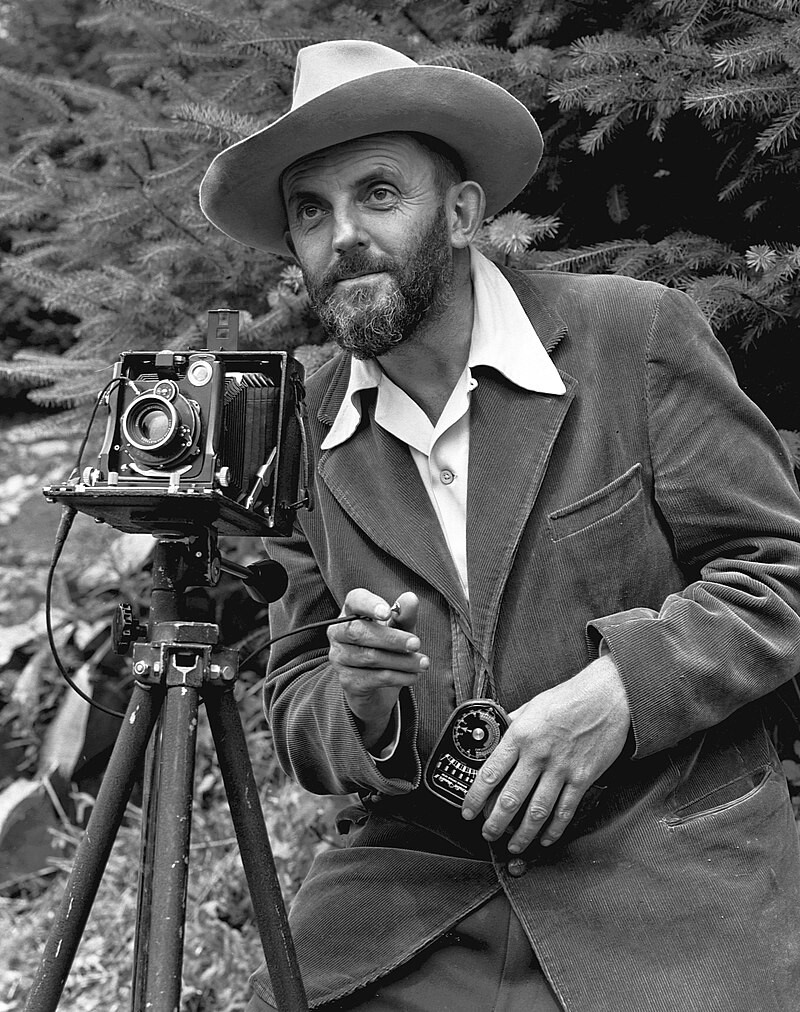
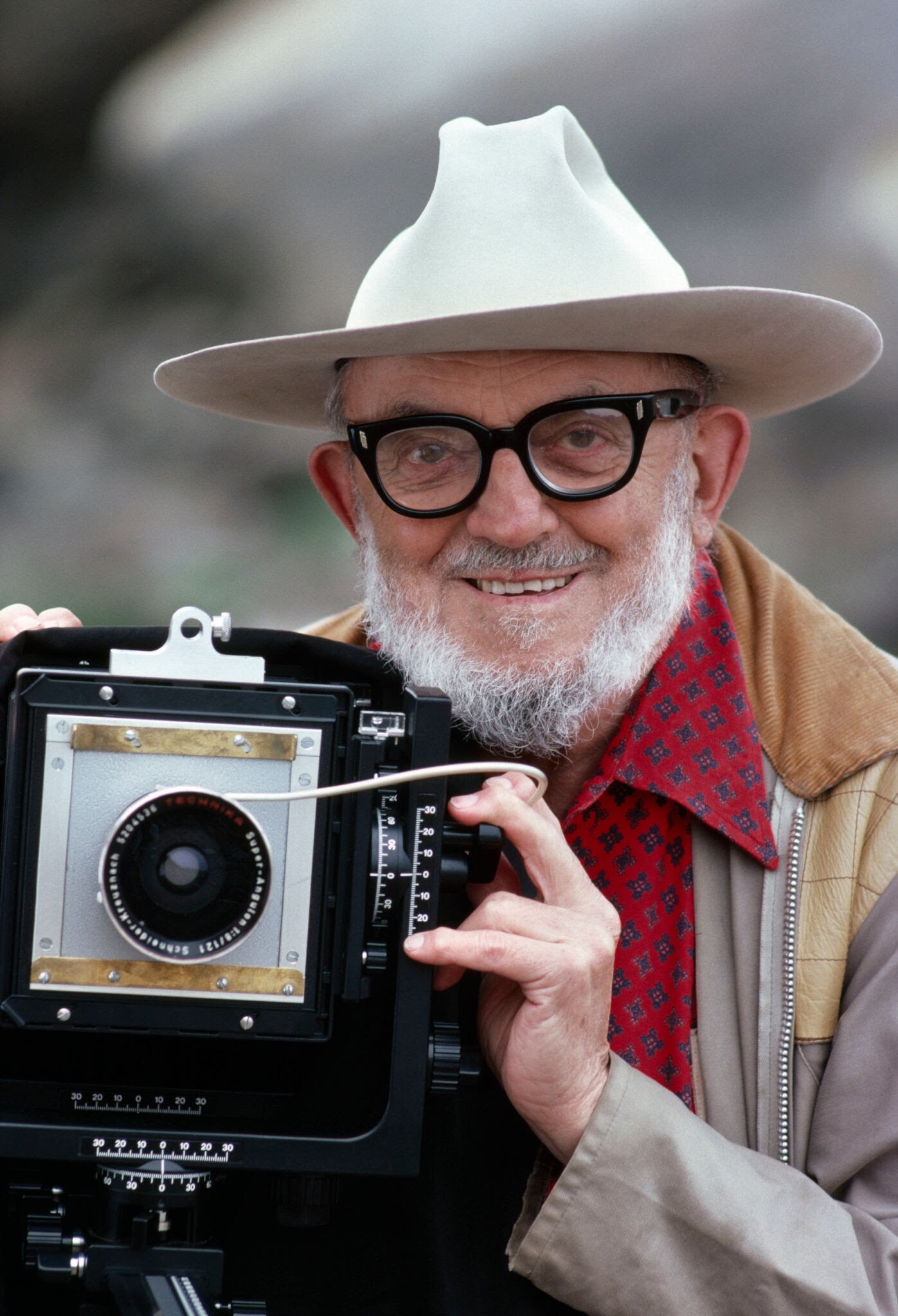
Ansel Easton Adams (February 20, 1902 – April 22, 1984) was an American landscape photographer and environmentalist known for his black-and-white images of the American West. He helped found Group f/64, an association of photographers advocating "pure" photography which favored sharp focus and the use of the full tonal range of a photograph. He and Fred Archer developed a system of image-making called the Zone System, a method of achieving a desired final print through a technical understanding of how the tonal range of an image is the result of choices made in exposure, negative development, and printing.
Adams was a life-long advocate for environmental conservation, and his photographic practice was deeply entwined with this advocacy. At age 12, he was given his first camera during his first visit to Yosemite National Park. He developed his early photographic work as a member of the Sierra Club. He was later contracted with the United States Department of the Interior to make photographs of national parks. For his work and his persistent advocacy, which helped expand the National Park system, he was awarded the Presidential Medal of Freedom in 1980.
Adams was a key advisor in the founding and establishment of the photography department at the Museum of Modern Art in New York, an important landmark in securing photography's institutional legitimacy. He helped to stage that department's first photography exhibition, helped found the photography magazine Aperture, and co-founded the Center for Creative Photography at the University of Arizona.
Source: Wikipedia
E355 - Stacks of Wheat (Sunset, Snow Effect) - Claude Monet - 1890/91
Haystacks is the common English title for a series of impressionist paintings by Claude Monet. The principal subject of each painting in the series is stacks of harvested wheat (or possibly barley or oats: the original French title, Les Meules à Giverny, simply means The Stacks at Giverny). The title refers primarily to a twenty-five canvas series (Wildenstein Index Numbers 1266–1290) which Monet began near the end of the summer of 1890 and continued through the following spring, though Monet also produced five earlier paintings using this same stack subject. A precursor to the series is the 1884 Haystack Near Giverny (Pushkin Museum).
The series is famous for the way in which Monet repeated the same subject to show the differing light and atmosphere at different times of day, across the seasons and in many types of weather.
The series is among Monet's most notable work. The largest Haystacks collections are held at the Musée d'Orsay and Musée Marmottan Monet in Paris, and in the Art Institute of Chicago.[1] Other collections include the Museum of Fine Arts, Boston,[2][3] the Metropolitan Museum and Museum of Modern Art in New York, the National Museum of Western Art in Tokyo, [4] and the Musée de l'Orangerie in Paris. The Art Institute of Chicago collection includes six of the twenty-five Haystacks.[5]
Other museums that hold parts of this series include the Getty Center in Los Angeles,[6] the Hill-Stead Museum in Farmington, Connecticut (which also has one of five from the earlier 1888–89 harvest),[7] the Scottish National Gallery,[8] the Minneapolis Institute of Arts,[9] Kunsthaus Zürich, Tel Aviv Museum of Art and the Shelburne Museum, Vermont.[10] Private collections hold the remaining Haystacks paintings.
Source: Wikipedia
The monumental stacks that Claude Monet depicted in his series Stacks of Wheat rose fifteen to twenty feet and stood just outside the artist’s farmhouse at Giverny. Through 1890 and 1891, he worked on this series both in the field, painting simultaneously at several easels, and in the studio, refining pictorial harmonies. In May 1891, Monet hung fifteen of these canvases next to each other in one small room in the Galerie Durand-Ruel in Paris. An unprecedented critical and financial success, the exhibition marked a breakthrough in Monet’s career, as well as in the history of French art. In this view, and in nearly all of the autumn views in the series, the conical tops of the stacks break the horizon and push into the sky. But in most of the winter views, which constitute the core of the series, the stacks seem wrapped by bands of hill and field, as if bedded down for the season. For Monet, the stack was a resonant symbol of sustenance and survival. He followed this group with further series depicting poplars, the facade of Rouen Cathedral, and, later, his own garden at Giverny. The Art Institute has the largest group of Monet’s Stacks of Wheat in the world.
Source: Art Institute of Chicago
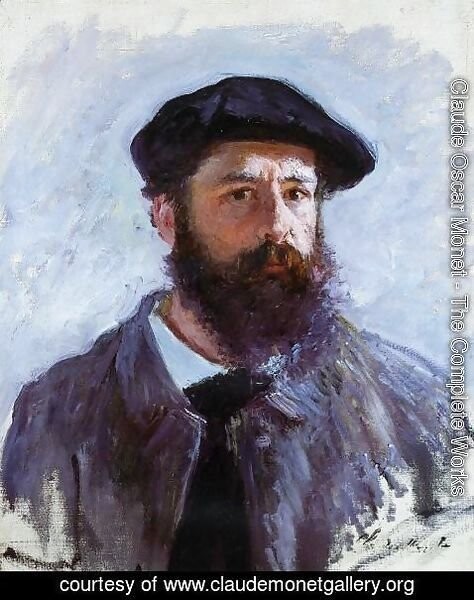
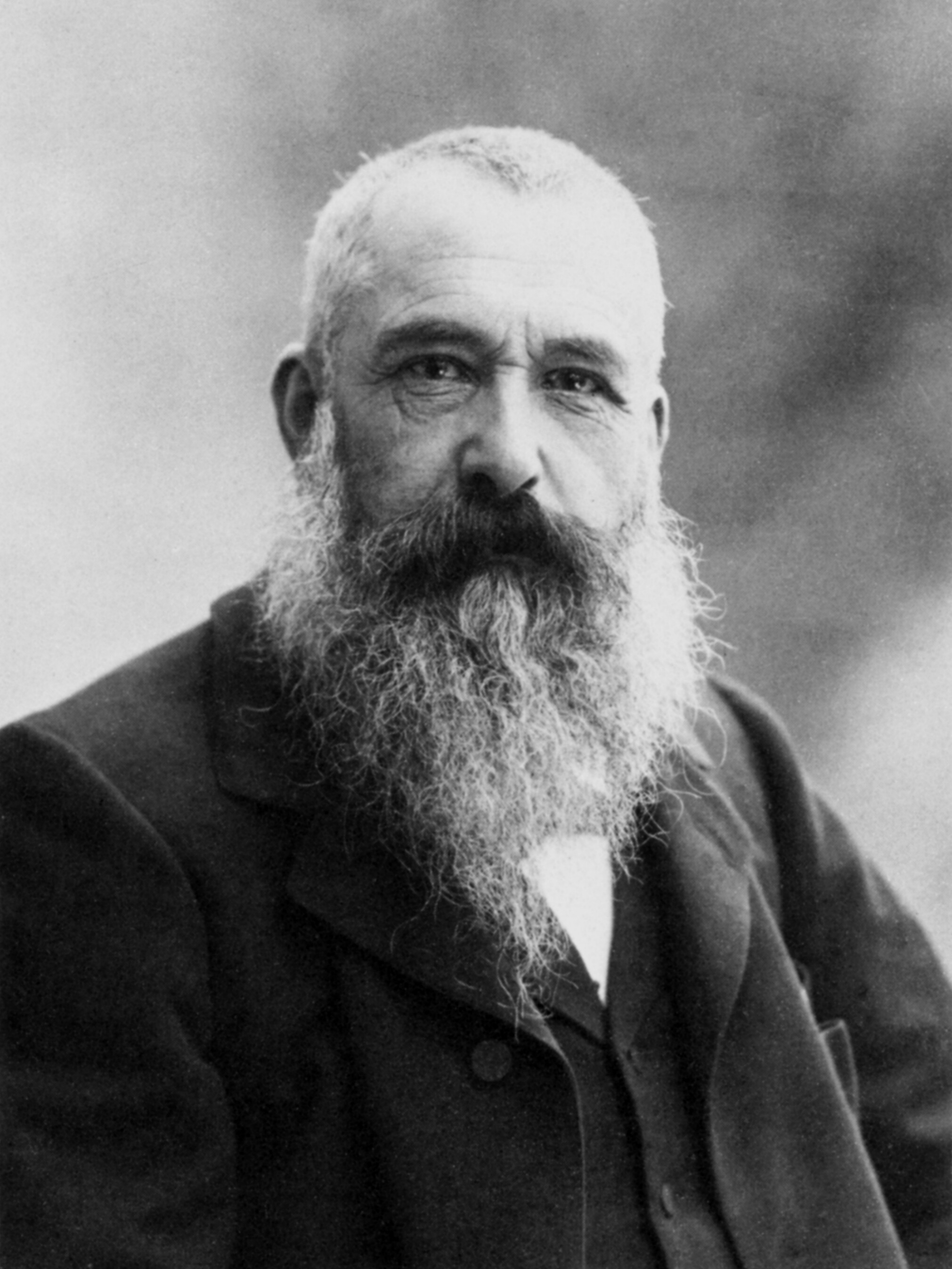
E355 - The Artist's Garden at Giverny - Claude Monet - 1900 – Staycation - Peggy
The Artist's Garden at Giverny (French:Le Jardin de l'artiste à Giverny) is an oil on canvas painting by Claude Monet done in 1900 now in the Musée d'Orsay, Paris.
It is one of many works by the artist of his garden at Giverny over the last thirty years of his life. The painting shows rows of irises in various shades of purple and pink set diagonally across the picture plane. The flowers are under trees that in allowing dappled light through change the tone of their colours. Beyond the trees is a glimpse of Monet's house.[1]
Monet was 60 years old the year he completed this painting, and had produced an immense body of work. He had become extraordinarily successful as well as famous.[2] By this time, he was analysing what he saw more and more until, according to William Seitz, "subject, sensation and pictorial object have all but become identical".[3]
In 1900, the year of this painting, he embarked on two major projects - a series of the River Thames in London and another series of his water gardens in Giverny, including some of his famous paintings of waterlilies, such as The Waterlily Pond (now in the Museum of Fine Arts Boston).
His dealer Durand-Ruel exhibited recent works, including a dozen Waterlilies[2] and he bought his friend Renoir's painting Mosque (Arabian Festival).[2]
Monet worked on and developed the garden that is the subject of the painting from the end of 1883 until the end of his life.
Source: Wikipedia
E355 - David - Michelangelo - 1501/1504
.jpg)
David is a masterpiece of Renaissance sculpture, created in marble between 1501 and 1504 by the Italian artist Michelangelo. With a height of 5.17-metre (17 ft 0 in) (with base)[1] the David was the first colossal marble statue, a precedent for the 16th century. The biblical figure David was a favoured subject in the art of Florence.[2]
David was originally commissioned as one of a series of statues of prophets to be positioned along the roofline of the east end of Florence Cathedral, but was instead placed in the public square in front of the Palazzo della Signoria, the seat of civic government in Florence, where it was unveiled on 8 September 1504. In 1873, the statue was moved to the Galleria dell'Accademia, Florence, and in 1910 replaced at the original location by a replica.[3]
Because of the nature of the figure it represented, the statue soon came to symbolize the defence of civil liberties embodied in the Republic of Florence, an independent city-state threatened on all sides by more powerful rival states and by the hegemony of the Medici family.
Source: Wikipedia
Michelangelo di Lodovico Buonarroti Simoni (Italian: [mikeˈlandʒelo di lodoˈviːko ˌbwɔnarˈrɔːti siˈmoːni]; 6 March 1475 – 18 February 1564), known as Michelangelo (English: /ˌmaɪkəlˈændʒəloʊ, ˌmɪk-/[1]), was an Italian sculptor, painter, architect,[2] and poet of the High Renaissance. Born in the Republic of Florence, his work was inspired by models from classical antiquity and had a lasting influence on Western art. Michelangelo's creative abilities and mastery in a range of artistic arenas define him as an archetypal Renaissance man, along with his rival and elder contemporary, Leonardo da Vinci.[3] Given the sheer volume of surviving correspondence, sketches, and reminiscences, Michelangelo is one of the best-documented artists of the 16th century. He was lauded by contemporary biographers as the most accomplished artist of his era.[4][5]
Source: Wikipedia
E355 - Albert Einstein Memorial - Robert Berks - 1979
The Albert Einstein Memorial is a monumental bronze statue by sculptor Robert Berks, depicting Albert Einstein seated with manuscript papers in hand. It is located in central Washington, D.C., United States, in a grove of trees at the southwest corner of the grounds of the National Academy of Sciences at 2101 Constitution Avenue N.W., near the Vietnam Veterans Memorial. Two replicas exist at the Israel Academy of Sciences and Humanities and the Georgia Institute of Technology.
Source: Wikipedia

Robert Berks (April 26, 1922 – May 16, 2011) was an American sculptor, industrial designer and planner. He created hundreds of bronze sculptures and monuments including the Mary McLeod Bethune Memorial, and the Albert Einstein Memorial in Washington, D.C.
Source: Wikipedia
E355 - Cliff Walk at Pourville, Claude Monet, 1882 - from Jill Parker
"This is one of my favorites --- Monet's Cliff Walk at Pourville. While perhaps a bit cliche, I have always loved the impressionists, and especially Monet. I worked one summer at the gift shop at the Art Institute of Chicago and got to spend a lot of time with the paintings --- some even before the galleries opened. While I am enchanted by so many of his paintings, and especially the series of haystacks and cathedrals at different times of day, this one, despite the women's formal dress, makes me feel joyful, warm but refreshed, free, breezy, with possibility. And he is truly a genius with color." from Jill Parker
E355 - Earth's Skin - El Anatsui - 2007 - from Jill Parker
"I also am overwhelmed by the wall hangings of the Ghanian artist, El Anatsui. While I don't know which of these extraordinary, enormous, vibrant, undulating works made with found liquor bottle caps is my favorite, this is a prime example, "In the World But Don't Know the World" from 2009. And you need to see these pieces in person to fully experience them. For more on El Anatsui and his work, see this NYT article and the embedded slideshow here." Jill Parker
Source: Wikipedia
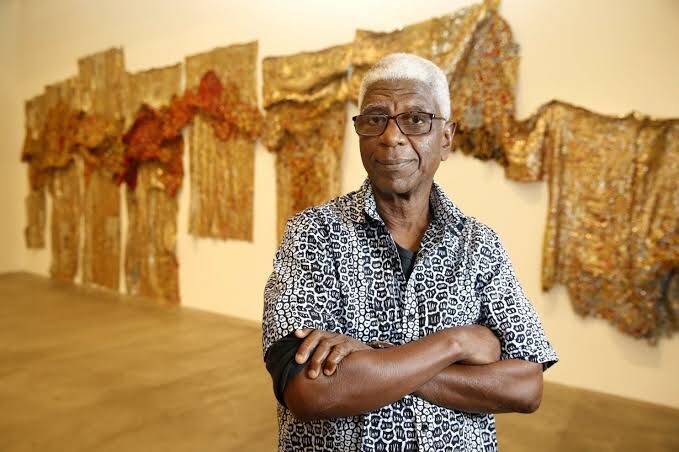
El Anatsui ([ah-nah-ch-wee], born 1944) is a Ghanaian sculptor active for much of his career in Nigeria. He has drawn particular international attention for his "bottle-top installations". These installations consist of thousands of aluminum pieces sourced from alcohol recycling stations and sewn together with copper wire, which are then transformed into metallic cloth-like wall sculptures. Such materials, while seemingly stiff and sturdy, are actually free and flexible, which often helps with manipulation when installing his sculptures.[1][2]
Source: Wikipedia
E355 - My Landscape II - Joan Mitchell - 1967
E355 - Pieta - Michelangelo - 1499
E355 - Moon and Half Dome - Ansel Adams - 1960
E355 - Stacks of Wheat (Sunset, Snow Effect) - Claude Monet - 1890/91
E355 - The Artist's Garden at Giverny - Claude Monet - 1900 – Staycation - Peggy
E355 - David - Michelangelo - 1501/1504
E355 - Albert Einstein Memorial - Robert Berks - 1979
E355 - Cliff Walk at Pourville, Claude Monet, 1882 - from Jill Parker
E355 - Earth's Skin - El Anatsui - 2007 - from Jill Parker
E355 - Meryl Streep by Maya Benatar
Place a DOT on the image

